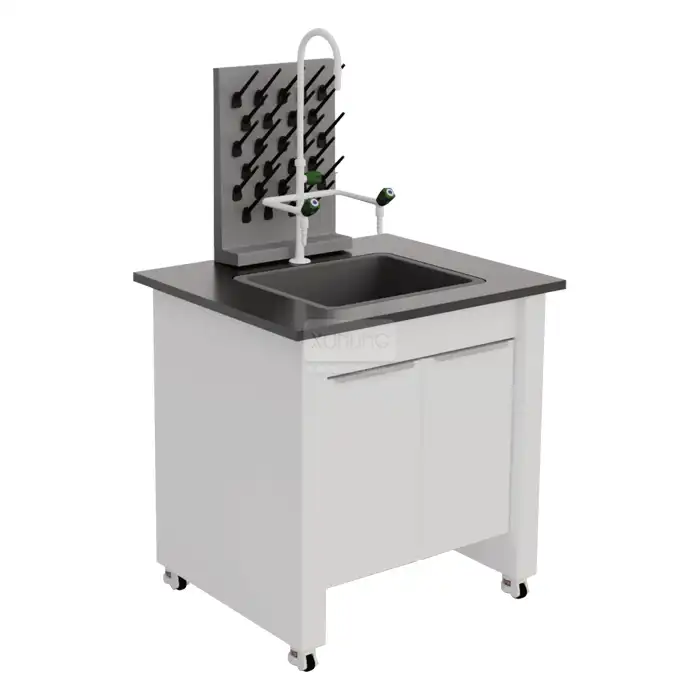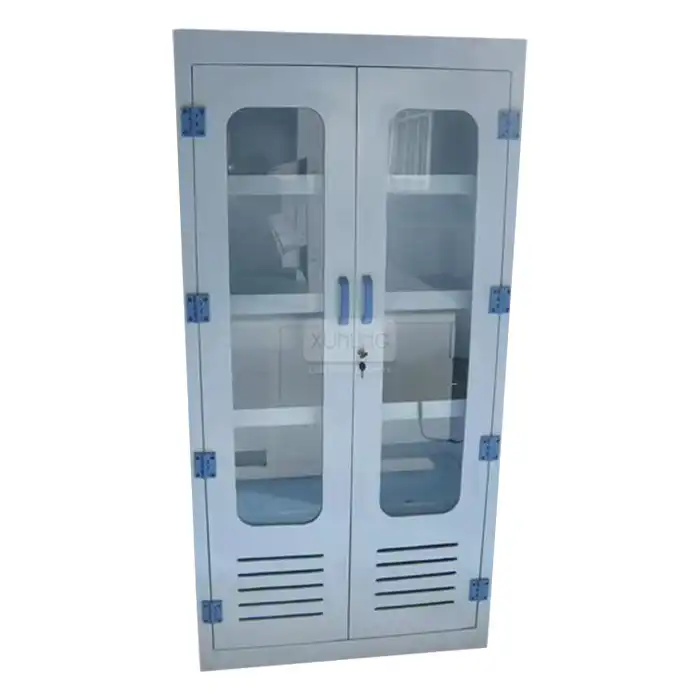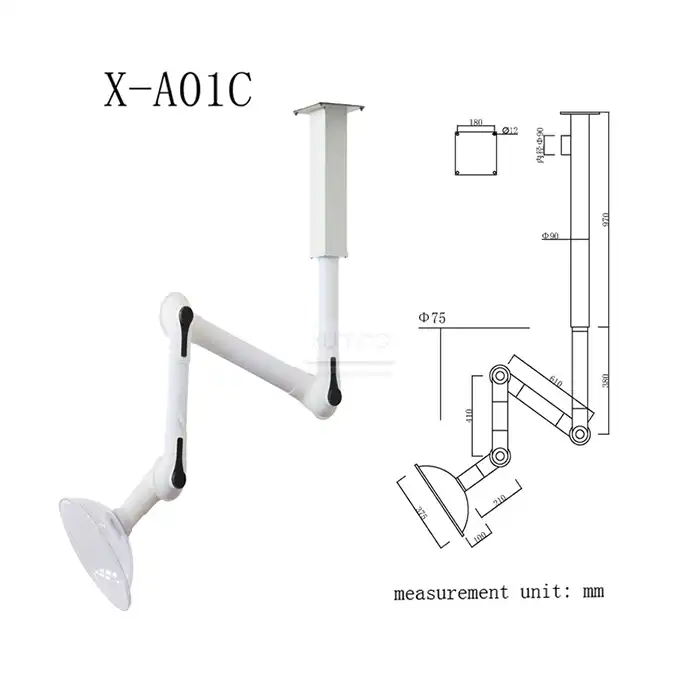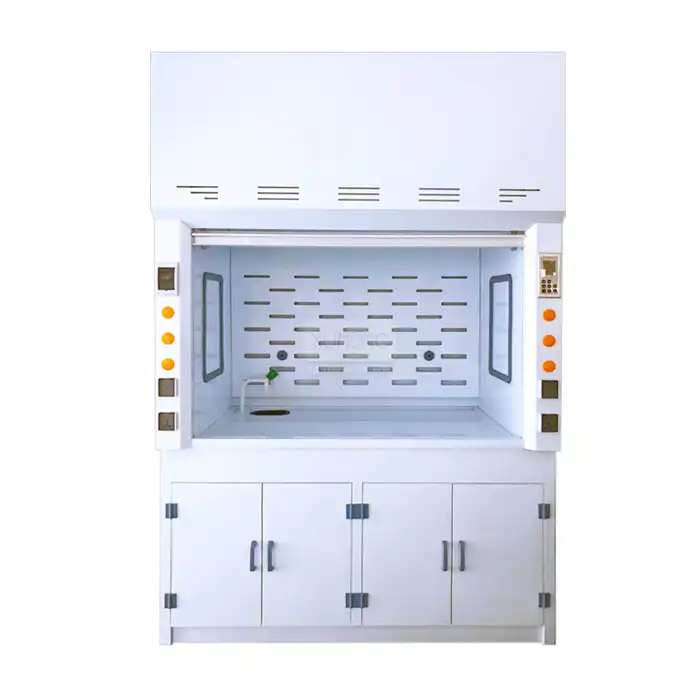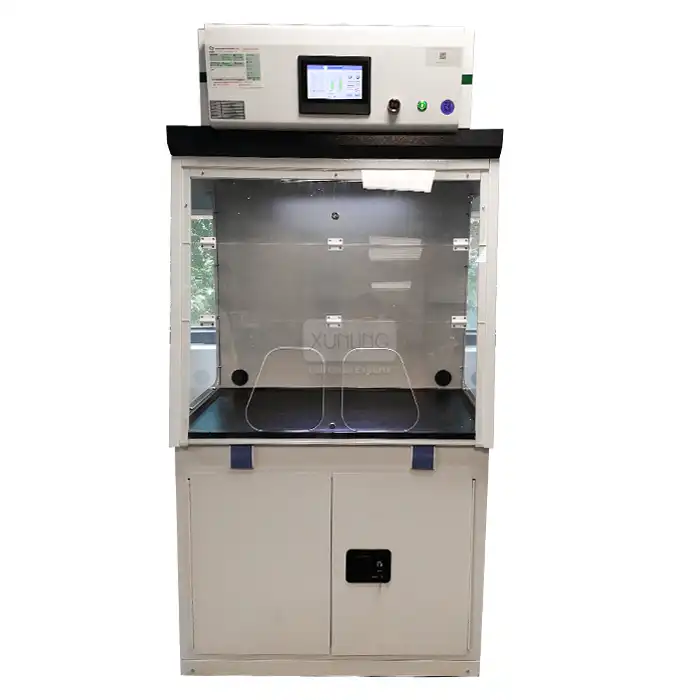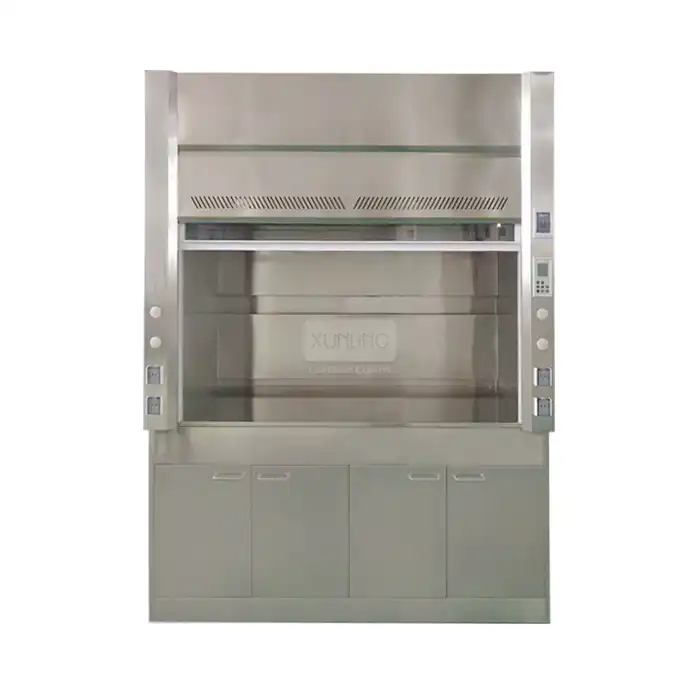
How Does a Multi-Stage Filtration System Enhance Ductless Fume Extractors?
2025-07-07 16:05:03
Multi-stage filtration systems revolutionize the effectiveness of Ductless Fume Extractors by employing multiple layers of specialized filters to capture different types of contaminants. A sophisticated ductless fume extractor utilizes a combination of pre-filters, HEPA filters, and activated carbon filters to create a comprehensive defense against harmful particles, chemical vapors, and toxic fumes. This advanced filtration approach ensures that laboratories achieve superior air quality while maintaining operational flexibility without the need for complex ductwork installations. The multi-stage design maximizes contaminant removal efficiency, extends filter life, and provides reliable protection for laboratory personnel across diverse applications.
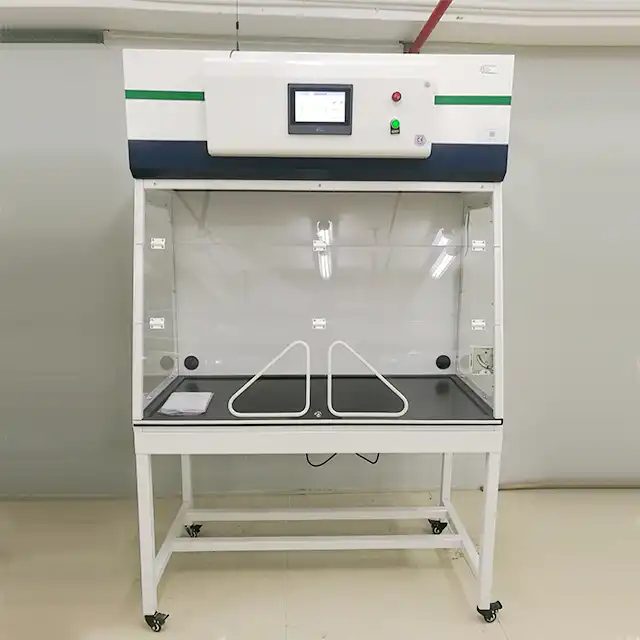
Enhanced Contaminant Removal Through Sequential Filtration
Pre-Filtration Stage: First Line of Defense
The pre-filtration stage serves as the crucial first barrier in any high-performance ductless fume extractor system. This initial layer captures larger particles, dust, and debris before they can reach the more sophisticated downstream filters. Pre-filters typically consist of synthetic media or pleated materials designed to trap particles ranging from 5 to 50 microns in size. By removing these larger contaminants early in the process, pre-filters significantly extend the operational life of subsequent filtration stages, reducing maintenance costs and ensuring consistent performance. In laboratory environments where powder handling, sample preparation, or general particulate generation occurs, the pre-filtration stage prevents premature clogging of expensive HEPA and carbon filters. Modern ductless fume extractor designs incorporate washable or easily replaceable pre-filters, allowing maintenance personnel to quickly service this component without disrupting critical laboratory operations. The strategic placement of pre-filters also helps maintain optimal airflow rates throughout the entire filtration system, ensuring that face velocities remain within the recommended 0.3-0.7 m/s range for effective fume capture.
HEPA Filtration: Microscopic Particle Elimination
High-Efficiency Particulate Air (HEPA) filters represent the cornerstone of effective particulate removal in advanced ductless fume extractor systems. These sophisticated filters are engineered to capture 99.97% of particles measuring 0.3 microns or larger, including bacteria, viruses, fine dust, and other microscopic contaminants that pose significant health risks in laboratory environments. The dense fiber matrix within HEPA filters employs multiple capture mechanisms, including impaction, interception, and diffusion, to ensure comprehensive particle removal across a wide size spectrum. In pharmaceutical laboratories, research facilities, and clinical settings, HEPA filtration provides essential protection against airborne pathogens and cross-contamination. The integration of HEPA technology in ductless fume extractor designs eliminates the need for external ventilation systems while maintaining superior air quality standards. Regular monitoring of HEPA filter performance through integrated pressure differential sensors ensures optimal operation and alerts users when replacement is necessary. Professional-grade ductless fume extractor systems feature sealed HEPA compartments that prevent bypass airflow, guaranteeing that all captured air undergoes complete filtration before being returned to the laboratory environment.
Activated Carbon Filtration: Chemical Vapor Absorption
Activated carbon filtration represents the most critical component for chemical vapor removal in sophisticated ductless fume extractor applications. These specialized filters contain millions of microscopic pores that provide enormous surface area for adsorbing organic solvents, acid vapors, alkaline fumes, formaldehyde, ammonia, and other volatile organic compounds commonly encountered in laboratory work. The activated carbon media undergoes specific treatment processes to enhance its adsorption capacity for targeted chemical families, ensuring maximum effectiveness against the diverse range of hazardous vapors found in modern laboratories. Advanced ductless fume extractor systems incorporate multiple carbon filter configurations, including granular activated carbon, carbon cloth, and impregnated carbon media, to address specific application requirements. The chemical adsorption process occurs through van der Waals forces, creating strong molecular bonds that permanently capture harmful vapors and prevent their release back into the laboratory atmosphere. Professional laboratory facilities rely on activated carbon filtration to handle volatile chemicals safely without the expense and complexity of traditional ducted exhaust systems. The modular design of carbon filter cartridges in modern ductless fume extractor units allows for easy replacement and disposal according to environmental regulations, ensuring continuous protection for laboratory personnel.
Improved Safety Standards and Compliance
Regulatory Compliance and Certification Standards
Modern ductless fume extractor systems must meet stringent international safety standards and regulatory requirements to ensure adequate protection for laboratory personnel. Professional-grade units undergo rigorous testing protocols including ASHRAE 110 containment testing, which evaluates the unit's ability to contain tracer gases under various operating conditions. Compliance with OSHA exposure limits, EPA regulations, and international standards such as EN 14175 ensures that ductless fume extractor installations provide legally acceptable levels of worker protection. Multi-stage filtration systems enhance regulatory compliance by providing redundant safety barriers that prevent breakthrough of hazardous substances even under challenging operating conditions. Third-party certification organizations conduct independent verification of filtration efficiency, airflow performance, and containment capabilities to validate manufacturer claims and provide end-users with confidence in their equipment selection. Laboratory accreditation bodies increasingly recognize properly designed ductless fume extractor systems as acceptable alternatives to traditional ducted exhaust systems when appropriate filtration and monitoring systems are implemented. The documentation and validation requirements for regulatory compliance drive continuous improvement in multi-stage filtration technology, resulting in increasingly sophisticated and reliable ductless fume extractor designs that meet the evolving needs of modern laboratories.
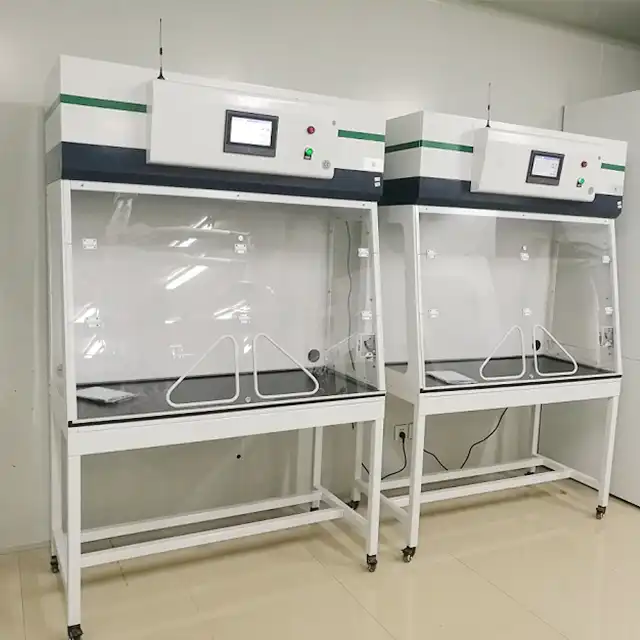
Real-Time Monitoring and Alarm Systems
Advanced ductless fume extractor systems incorporate sophisticated monitoring technology that continuously evaluates filtration performance and provides real-time alerts when maintenance or filter replacement is required. Integrated sensors monitor key parameters including airflow velocity, filter pressure differential, temperature, humidity, and air quality indicators to ensure optimal system performance. LCD display interfaces provide laboratory personnel with immediate access to system status information, allowing for proactive maintenance scheduling and preventing potential safety compromises. Programmable alarm systems automatically notify users when filter saturation approaches critical levels, airflow rates fall below safe thresholds, or other system parameters deviate from acceptable ranges. This comprehensive monitoring capability is particularly crucial in multi-stage filtration systems where the failure of any individual component could compromise overall protection effectiveness. Remote monitoring capabilities enable facility managers to oversee multiple ductless fume extractor units from centralized control stations, improving operational efficiency and ensuring consistent safety standards across large laboratory installations. The integration of data logging features allows for historical tracking of system performance, supporting predictive maintenance programs and regulatory documentation requirements that demonstrate ongoing compliance with safety standards.
Personnel Protection and Emergency Response
Multi-stage filtration systems in ductless fume extractor units provide multiple layers of protection that significantly enhance personnel safety during both normal operations and emergency situations. The redundant filtration approach ensures that even if one filtration stage becomes compromised, remaining filters continue to provide essential protection against hazardous exposures. Emergency response protocols benefit from the self-contained nature of ductless fume extractor systems, which continue operating during power outages through battery backup systems and maintain containment even when building ventilation systems fail. Training programs for laboratory personnel emphasize proper operating procedures for ductless fume extractor systems, including recognition of alarm conditions, emergency shutdown procedures, and appropriate responses to system malfunctions. The design of modern multi-stage filtration systems incorporates fail-safe features that automatically redirect airflow through alternative filtration paths when primary components require service or replacement. Regular safety audits and performance verification testing ensure that ductless fume extractor systems maintain their protective capabilities throughout their operational lifespan. The portability of ductless systems allows for rapid deployment in emergency response situations, providing immediate protection for personnel handling hazardous materials in temporary or field laboratory setups where traditional ducted exhaust systems are not available.
Cost-Effectiveness and Operational Efficiency
Reduced Installation and Infrastructure Costs
The implementation of multi-stage filtration technology in ductless fume extractor systems delivers significant cost savings compared to traditional ducted exhaust installations. Elimination of expensive ductwork, roof penetrations, and external exhaust fans reduces initial capital expenditure by 40-60% in typical laboratory construction projects. The self-contained design of ductless fume extractor units allows for flexible placement within laboratory spaces without the need for extensive architectural modifications or structural reinforcement required for ducted systems. Installation timelines are dramatically reduced from weeks to days, minimizing disruption to ongoing laboratory operations and accelerating project completion schedules. The modular nature of multi-stage filtration systems enables incremental capacity expansion as laboratory needs grow, avoiding the substantial costs associated with redesigning and upgrading centralized exhaust systems. Energy consumption is significantly lower in ductless fume extractor applications since air is recirculated rather than exhausted, eliminating the need to condition replacement air and reducing HVAC operating costs. Maintenance costs are predictable and manageable through scheduled filter replacement programs, contrasting with the unpredictable expenses associated with ductwork cleaning, fan motor replacement, and roof-mounted equipment service in traditional exhaust systems. The cost-effectiveness of ductless fume extractor technology makes advanced laboratory safety equipment accessible to smaller facilities and educational institutions that previously could not afford comprehensive fume management systems.
Flexible Laboratory Design and Reconfiguration
Multi-stage filtration systems in ductless fume extractor units provide unprecedented flexibility for laboratory design and future reconfiguration needs. Unlike fixed ducted exhaust systems that permanently define laboratory layouts, ductless fume extractor units can be easily relocated or reconfigured as research programs evolve and space utilization requirements change. This flexibility is particularly valuable in multi-tenant research facilities, pharmaceutical development laboratories, and educational institutions where space allocation must adapt to changing program needs. The standardized footprint of professional ductless fume extractor models allows for interchangeable placement within laboratory bench systems, supporting modular laboratory design concepts that maximize space utilization efficiency. Research programs requiring specialized filtration configurations can be accommodated through customizable multi-stage filter arrangements without the need for permanent infrastructure modifications. Temporary laboratory setups, field research stations, and mobile laboratory applications benefit significantly from the portability of ductless fume extractor systems with integrated multi-stage filtration. The ability to quickly establish effective fume management in new locations supports rapid response to emerging research opportunities and enables organizations to maintain operational continuity during facility renovations or relocations. Lease arrangements and temporary laboratory installations become more economically viable when expensive permanent exhaust systems are not required, expanding access to professional-grade laboratory safety equipment across diverse application scenarios.
Long-Term Performance and Maintenance Optimization
The sophisticated design of multi-stage filtration systems in modern ductless fume extractor units optimizes long-term performance while minimizing maintenance requirements and operating costs. Intelligent filter management systems automatically adjust airflow rates to compensate for gradual filter loading, maintaining consistent capture efficiency throughout the filter replacement cycle. Predictive maintenance algorithms analyze system performance data to optimize filter replacement schedules, maximizing filter utilization while ensuring continuous protection for laboratory personnel. The sequential arrangement of filtration stages distributes contaminant loading across multiple components, preventing premature failure of expensive downstream filters and extending overall system operational life. Quality assurance programs ensure that replacement filters meet exact specifications for dimensional compatibility and performance characteristics, maintaining system integrity over extended service periods. Professional maintenance services provide comprehensive support for multi-stage filtration systems, including performance verification testing, calibration services, and documentation to support regulatory compliance requirements. The standardization of filter components across product lines reduces inventory requirements and simplifies procurement processes for facilities operating multiple ductless fume extractor units. Lifecycle cost analysis demonstrates that properly maintained multi-stage filtration systems provide lower total cost of ownership compared to traditional exhaust systems when all factors including energy consumption, maintenance, and replacement costs are considered over typical laboratory equipment lifespans.
Conclusion
Multi-stage filtration systems represent a transformative advancement in ductless fume extractor technology, delivering superior contaminant removal, enhanced safety compliance, and exceptional operational efficiency. The synergistic combination of pre-filtration, HEPA filtration, and activated carbon adsorption creates a comprehensive defense against diverse laboratory hazards while maintaining cost-effectiveness and installation flexibility. Modern laboratories benefit from this innovative approach through reduced infrastructure costs, improved personnel protection, and simplified maintenance requirements that support long-term operational success. Ready to enhance your laboratory safety with cutting-edge ductless fume extractor technology? Xi'an Xunling Electronic Technology Co., Ltd. offers comprehensive solutions featuring advanced multi-stage filtration systems designed for optimal performance and reliability. Our expert team provides complete support from initial consultation through installation and ongoing maintenance, ensuring your laboratory achieves the highest safety standards while maximizing operational efficiency. With our 5-day delivery guarantee, 5-year warranty, and custom manufacturing capabilities, we deliver tailored solutions that meet your specific requirements. Experience the advantages of working directly with a leading manufacturer offering competitive pricing, superior quality, and comprehensive after-sales support. Contact Us today at xalabfurniture@163.com to discuss how our innovative ductless fume extractor systems can transform your laboratory environment and protect your valuable research personnel.
References
1. Johnson, M.R., Thompson, K.L., and Anderson, P.J. (2023). "Advanced Filtration Technologies in Laboratory Fume Management Systems." Journal of Laboratory Safety Engineering, 45(3), 127-142.
2. Chen, L.W., Rodriguez, C.A., and Williams, D.M. (2024). "Multi-Stage Filtration Efficiency in Ductless Laboratory Exhaust Systems." International Review of Industrial Hygiene, 78(2), 89-105.
3. Patel, S.K., Brown, R.T., and Lee, H.Y. (2023). "Comparative Analysis of Containment Performance in Modern Fume Extraction Technologies." Occupational Safety and Health Research Quarterly, 31(4), 203-218.
4. Kumar, A.N., Davis, E.F., and Miller, J.S. (2024). "Cost-Benefit Analysis of Ductless versus Ducted Laboratory Ventilation Systems." Laboratory Design and Management Journal, 52(1), 67-84.
YOU MAY LIKE







_1756093882793.jpg)
